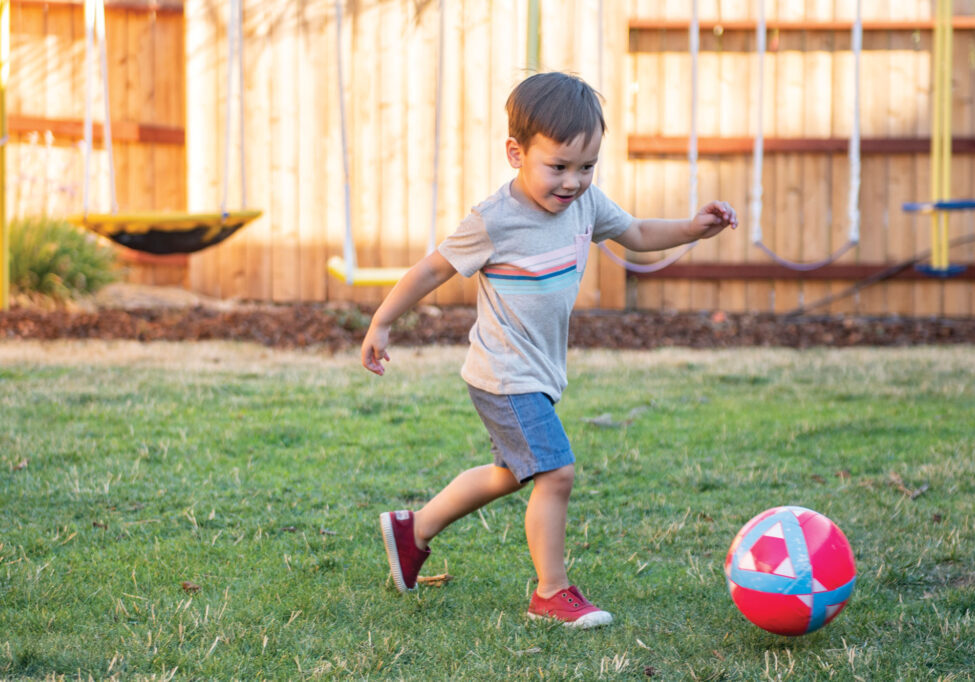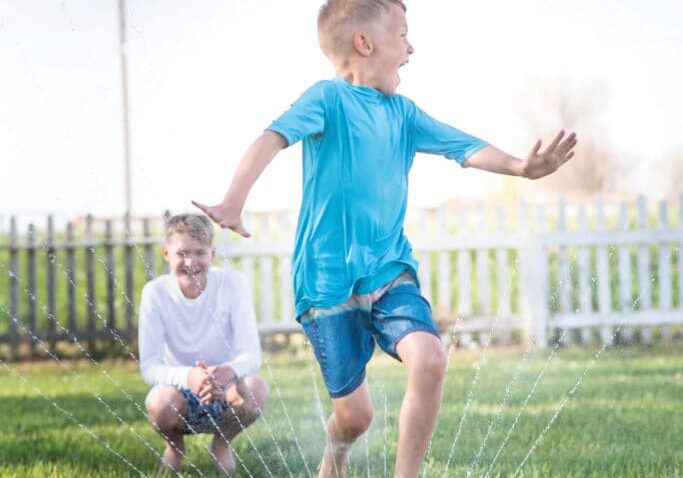
Photo: Firefly Mobile Studios http://www.firefly2u.com
Sports injuries are sidelining more young athletes than ever before, a trend that concerns doctors, coaches and parents. According to the STOP Sports Injury Campaign, 2 million sports injuries strike high school students each year. Doctors are seeing serious injuries in children as young as 5; kids under 14 account for 40 percent of sports-related injuries treated in hospitals.
For some, injuries are a temporary setback. Basketball player McKenzie Heaslet, 18, missed only two days of practice after a wayward elbow broke her nose during a game. One month later, she played in her third straight state championship game, winning the title with her teammates. Her mom, Dianne, knows the injury could have been much worse. “We got really lucky,” she says.
Many others aren’t as fortunate. Sports injuries can stop budding athletes in their tracks and reduce their ability to enjoy healthy exercise later in life, says Lyle J. Micheli, M.D., director of sports medicine at Boston Children’s Hospital and professor of orthopedics at Harvard Medical School.
Doctors point to several reasons for recent increases in injury rates: greater recognition of some types of injury (like concussion); year-round training for athletes; and more intense training at younger ages. “Young kids – 11, 12 years old – are swimming thousands of yards a day,” says Dr. Micheli. “A decade ago, we wouldn’t see that type of training intensity until college.”
Fear of injury shouldn’t stop kids from participating in sports. Organized sports boost fitness and teach important skills like cooperation, perseverance and team building. Help ensure that your budding athlete stays on the field and out of the emergency room with the right safety measures.
Focus on Fun
Dr. Micheli says that enjoyment is the key to safe sportsmanship, so make sure kids truly want to participate. Those who play to please parents, friends or coaches, instead of for pure enjoyment, may be less likely to take a break if they’re in pain or fatigued.
Watch for signs of burnout, including irritability, trouble sleeping, changes in appetite and difficulties at school. These symptoms can indicate that a child is working too hard and needs a change of pace.
Take a Break
“Young athletes who train year-round are more prone to injury,” says Marci Goolsby, M.D., assistant sports medicine physician at New York’s Hospital for Special Surgery. Adequate downtime between seasons allows tissues to rest and repair. She recommends a minimum of two weeks off – a full month is ideal.
Sign Language
“Early detection and treatment are important to recovery,” says Dr. Micheli, “so parents should be aware of the signs of injury and act quickly.” Any pain that doesn’t disappear within a day or two should be evaluated by a doctor.
Signs of concussion are especially important to recognize, because they can be subtle and are sometimes masked by other symptoms. Brain injury can cause confusion, headaches, ringing in the ears, nausea and lack of responsiveness. “Concussions sometimes go unrecognized for weeks,” says Dr. Micheli. If you suspect one, see a doctor immediately.
Screen for Safety
Many sports programs are encouraging athletes to take part in pre-injury screening that helps identify brain injuries and rate their severity. The most widely used is the ImPACT test (Immediate Post-Concussion Assessment and Cognitive Testing), developed in the early 1990s by Dr. Mark Lovell and Dr. Joseph Maroon.
When the test is taken before an injury, it provides a baseline for evaluating cognitive performance. After a concussion, the athlete’s recovery can be tracked to prevent the athlete from returning to sports prematurely.
Strong Defense
Strength training and conditioning can help a child ward off injury. Dr. Micheli and Dr. Goolsby both recommend age-appropriate weight lifting under proper supervision. Stronger muscles provide greater stability and balance for jumping, landing, turning, throwing and other strenuous moves.
Growing Caution
According to Dr. Micheli, kids are especially vulnerable to injury during growth spurts. If your child is growing (sudden increases in appetite and sleep needs are signs of a growth spurt), take extra safety precautions.
Protect Practice
Safety procedures for games and meets should be upheld at practice, too. Over 60 percent of sports-related injuries happen during practice, where safety standards are often more relaxed. Make practice safer by insisting on protective gear, rest, hydration and other safety measures at practices.
Superior Supervision
Sports medicine experts agree that parents should be aware of the level and quality of adult supervision for their children’s sports teams. Credentialing and experience for coaches varies widely, particularly in community sports programs. School-sanctioned sports programs benefit from access to athletic trainers and conditioning facilities, while community-based sports programs often don’t.
“Serious sports injuries are tragic,” says Dr. Micheli, “because sports can and should be fun for kids.” Childhood sports set the stage for a lifetime of healthy, active living. With the right safety precautions, sports-loving kids can stay safe and keep running, pitching, throwing, jumping and cheering for years to come.
[sws_yellow_box box_size=”590″]
Sports Safety for Girls
Growing evidence points to the need for special safety precautions for female athletes, particularly those participating in high-intensity contact sports like basketball and soccer. “There’s good evidence that girls have two to three times the risk of anterior cruciate ligament (ACL) injuries and a greater risk of knee injuries in general,” says Dr. Micheli.
Dr. Goolsby played high school and collegiate basketball without a traumatic knee or ACL injury, something she attributes to conditioning and strength training. She recommends that girls lift weights for strength, balance and injury protection. As with all athletes and all sports, proper technique, experienced coaching and skilled supervision are critical to safety.
Nutrition is particularly important to pre-teen and teenage girls who play sports. A girl who has reached puberty but isn’t getting a period may have an energy imbalance; she needs to take in more calories to make up for energy spent during practice and games.
Added calories should be nutrient-dense. “Chips and soda don’t cut it,” says Dr. Goolsby. If female athletes don’t get enough calcium, their risk of stress fractures increases, so aim for 800 milligrams of calcium per day for children ages 4-8 and 1300 milligrams per day for ages 9-18.
[/sws_yellow_box]
Posted in: Out & About
Comment Policy: All viewpoints are welcome, but comments should remain relevant. Personal attacks, profanity, and aggressive behavior are not allowed. No spam, advertising, or promoting of products/services. Please, only use your real name and limit the amount of links submitted in your comment.
Comments
Leave a Reply
You Might Also Like...

North State Parent Picks for Fun Science-based Adventures
Summer is nearly here and the signs signaling the end of the school year are clear. With some daydreaming, careful planning, and input from our kids, we can look forward […]

Tehama Concert Series – Uplifting, Positive & Feel-Good
Ask anyone who’s watched the 1965 musical film, “The Sound of Music,” and you’ll hear the words uplifting, positive, feel-good, and, of course, “do, re, mi, fa, sol, la, ti, […]

Learning to THRIVE at Alua’s Thrive Bar
Before you enter Alua’s Thrive Bar, you are met with a beautiful quote on the wall from Maya Angelou: “My mission in life is not merely to survive, but to […]

Getting All the Buzz on Bees at Orland’s Honeybee Discovery Center
Because one-third of all the food we eat is directly or indirectly dependent on honeybee pollination, bees and other pollinators are vital for human life. At Orland’s Honeybee Discovery Center, […]




Wilio Curnold says
Sports injuries at a young age are detrimental and could pose emotional problems to the child as he/she is growing up. It’s the responsibility of the parents and their respective coaches to warned them about the dangers of over exertion and importance of taking a rest in between trainings.